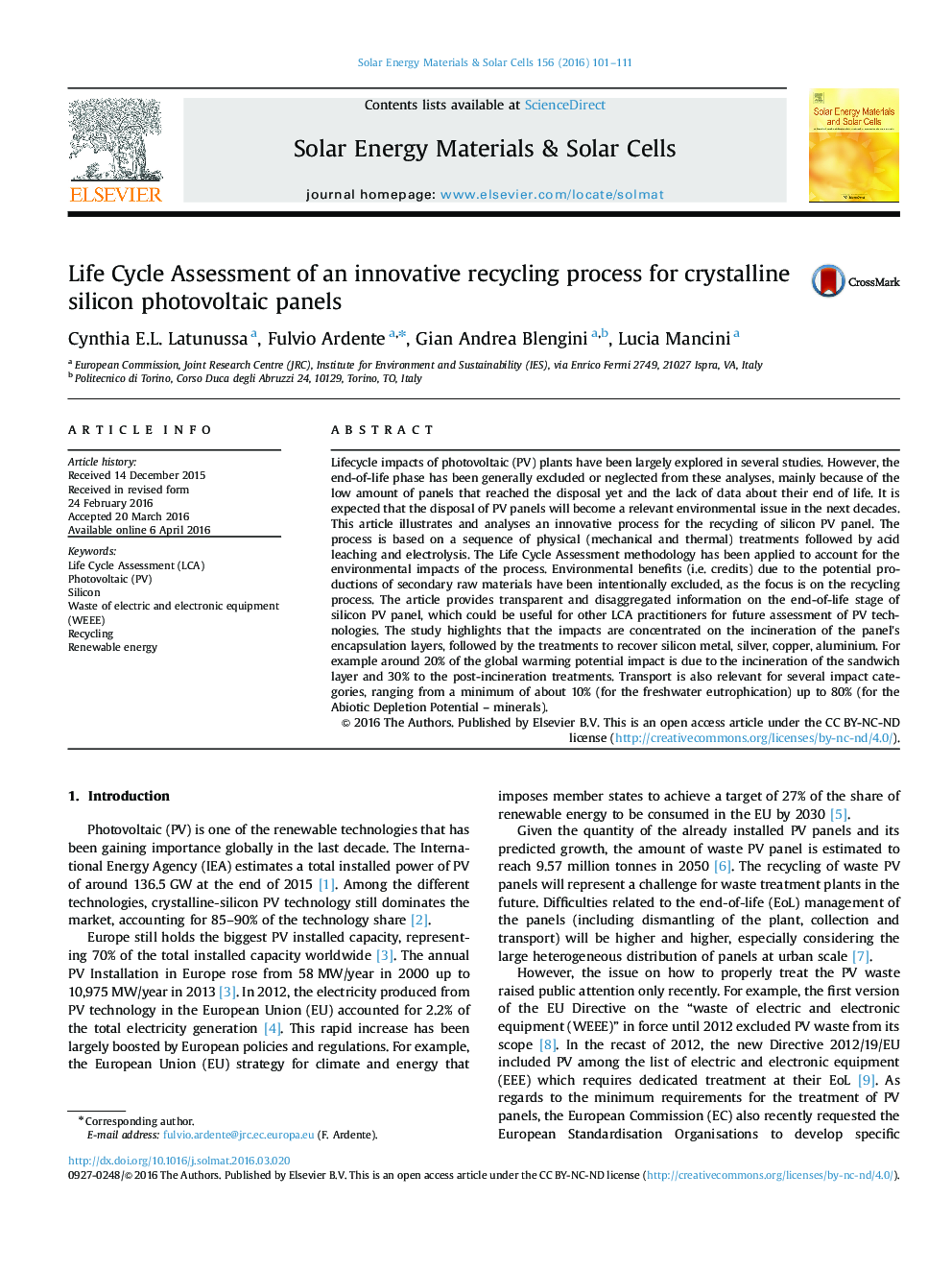| کد مقاله | کد نشریه | سال انتشار | مقاله انگلیسی | نسخه تمام متن |
|---|---|---|---|---|
| 6457664 | 1420666 | 2016 | 11 صفحه PDF | دانلود رایگان |
- We analysed an innovative process for the recycling of silicon PV panels.
- We applied a Life Cycle Assessment to estimate impacts of the recycling.
- Disaggregated results of lifecycle inventory and impact assessment have been presented.
- About 370Â kg CO2eq and 2780Â MJ are due to the recycling of 1000Â kg of PV waste.
- Main contributors to impacts are: transport, incineration of the sandwich and post-incineration treatments.
Lifecycle impacts of photovoltaic (PV) plants have been largely explored in several studies. However, the end-of-life phase has been generally excluded or neglected from these analyses, mainly because of the low amount of panels that reached the disposal yet and the lack of data about their end of life. It is expected that the disposal of PV panels will become a relevant environmental issue in the next decades. This article illustrates and analyses an innovative process for the recycling of silicon PV panel. The process is based on a sequence of physical (mechanical and thermal) treatments followed by acid leaching and electrolysis. The Life Cycle Assessment methodology has been applied to account for the environmental impacts of the process. Environmental benefits (i.e. credits) due to the potential productions of secondary raw materials have been intentionally excluded, as the focus is on the recycling process. The article provides transparent and disaggregated information on the end-of-life stage of silicon PV panel, which could be useful for other LCA practitioners for future assessment of PV technologies. The study highlights that the impacts are concentrated on the incineration of the panel׳s encapsulation layers, followed by the treatments to recover silicon metal, silver, copper, aluminium. For example around 20% of the global warming potential impact is due to the incineration of the sandwich layer and 30% to the post-incineration treatments. Transport is also relevant for several impact categories, ranging from a minimum of about 10% (for the freshwater eutrophication) up to 80% (for the Abiotic Depletion Potential - minerals).
Journal: Solar Energy Materials and Solar Cells - Volume 156, November 2016, Pages 101-111
